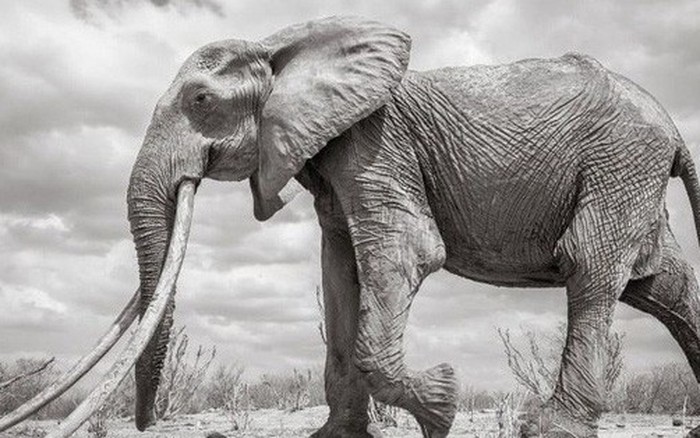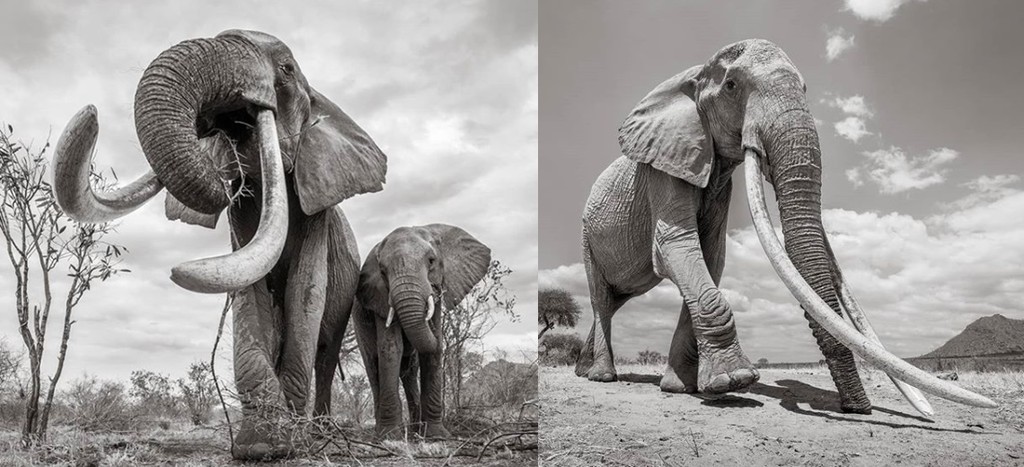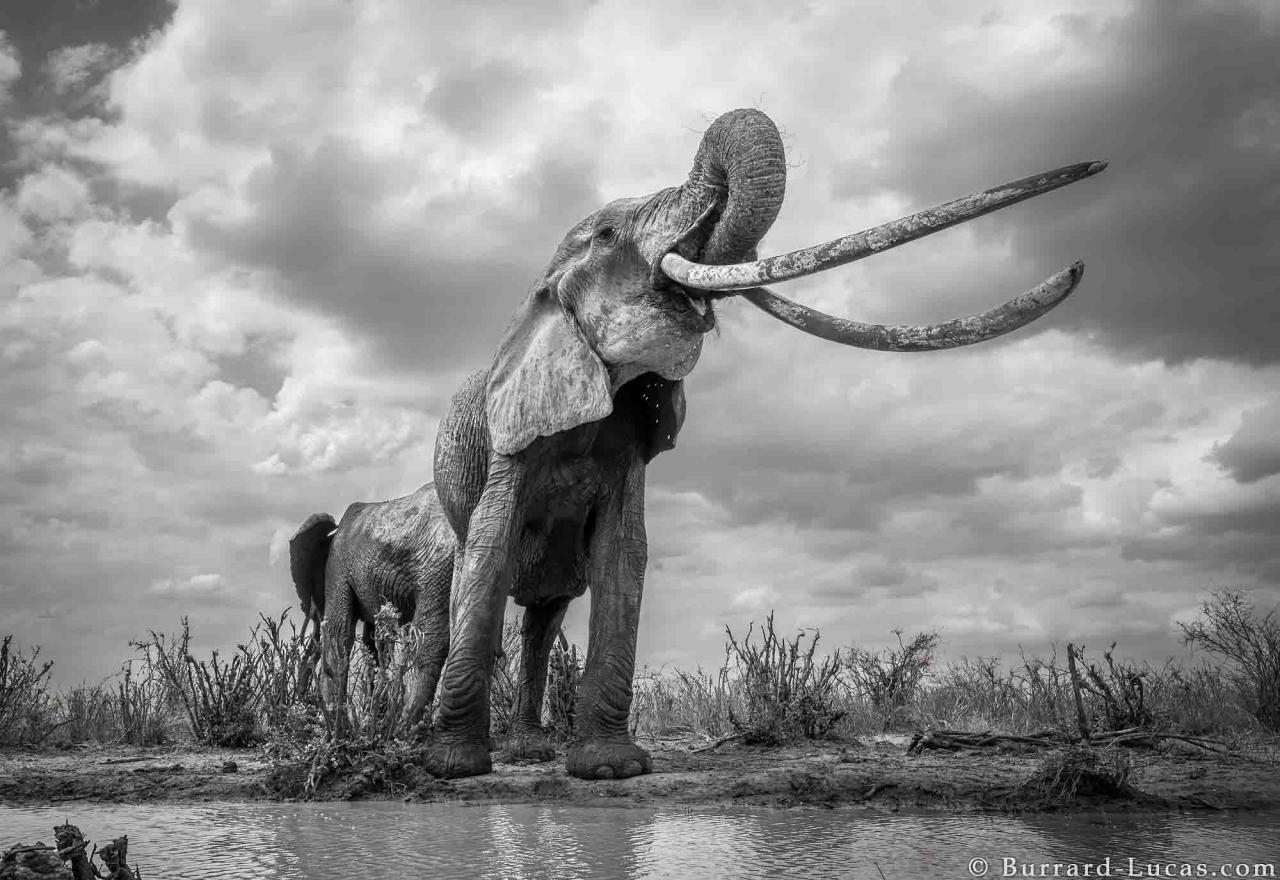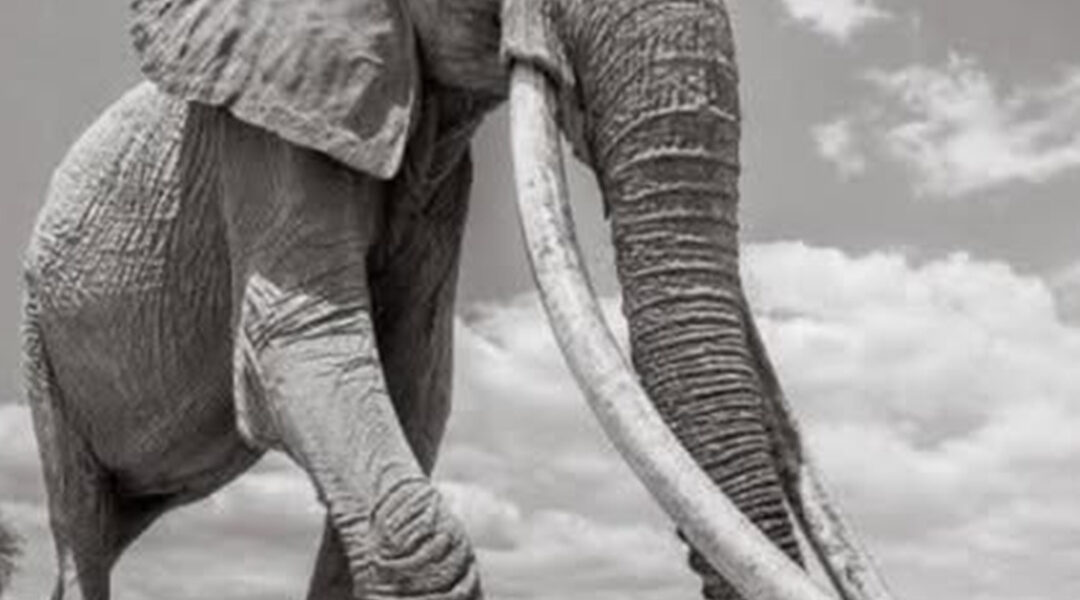For more than sixty years, she walked the red-dusted plains of Tsavo East National Park in Kenya, her every step a reminder of nature’s grandeur. She was known simply as the Queen Elephant—a title earned not through force, but through quiet majesty.

What set her apart was unmistakable. Her tusks—enormous, gleaming arcs of ivory—grew so long they brushed the ground with every stride. Few elephants in the world carry tusks of that size. Those that do are called super tuskers, an almost mythical group of giants whose lineage has been nearly erased by time and human greed.
Each tusk could weigh over a hundred pounds, an inheritance of ancient genetics passed down from ancestors who roamed a wilder Africa. Today, fewer than thirty of these extraordinary elephants remain on the entire continent. They are living monuments—fragile, irreplaceable, and increasingly rare.
The Queen Elephant became a legend among those who saw her. Wildlife photographers waited for years to capture even a single glimpse of her silhouette against the savannah. Rangers who protected Tsavo spoke of her with reverence, as though describing royalty. Tourists from every corner of the world traveled to Kenya in hopes of witnessing the miracle of her presence. To see her was to step into another era—an age when elephants ruled the land in their full, unbroken splendor.

But her life was not just a symbol of beauty. It was also a testament to survival. For decades, poachers scoured Africa’s wilderness, killing elephants for ivory and pushing the species to the brink. That this Queen lived to such an age, her tusks untouched, was itself a victory—a story of protection, vigilance, and the resilience of life when given the chance.
To conservationists, she was more than a marvel. She was a mother, a carrier of rare and resilient genes, a vital link in ensuring elephants could endure for future generations. Each calf born of her line was a chance for survival, a promise that giants might still walk the earth tomorrow.

Now, with her passing, the savannah feels quieter. The Queen Elephant is gone, but her memory remains etched into the red soil of Tsavo and in the hearts of all who were blessed to see her. She reminds us of what we stand to lose if we fail to protect what is left.
Her life is a call to action: to protect the last super tuskers, to defend the wilderness from poaching and destruction, to honor the giants who hold our planet’s history in their very bones.

For more than sixty years, she carried herself with grace, strength, and dignity. She was the Queen of Tsavo—one of the last of the great tuskers. And though she is gone, the echo of her footsteps urges us to fight harder for those who remain.
Because when the giants disappear, the world itself grows smaller.




